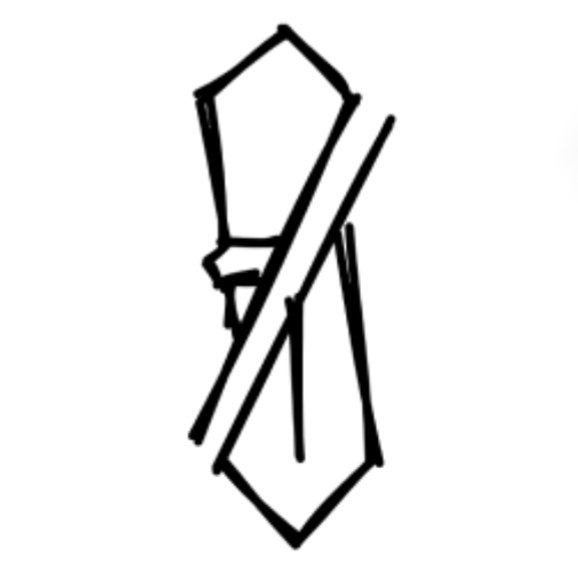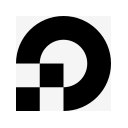IFBB 精英联盟规则:男子古典健体

IFBB 精英联盟规则:男子古典健体
李瑶瑶IFBB 精英联盟规则:男子古典健体

内容声明
本文内容来源于:IFBB FEDERATION RULES
仅供个人学习使用
中文部分为我个人翻译校对,转载请注明来源 理・型・健 —(必应 Bing 可以搜索到)
同系列其它文章:
IFBB 精英联盟规则:通用规则 | 理・型・健
IFBB 精英联盟规则:男子健身模特 | 理・型・健
IFBB 精英联盟规则:男子健体 | 理・型・健
IFBB 精英联盟规则:男子传统健美 | 理・型・健
IFBB 精英联盟规则:女子比基尼 | 理・型・健
IFBB 精英联盟规则:女子健康小姐 | 理・型・健
除此之外,如果有转译不清楚甚至有误的部分,建议去原文件自行考证,每个部分我都会附上原文件链接。
男子古典健体 Men’s Classic Physique
官方文件:Men’s Classic Physique Rules (2024)
摘要
男子古典健体于2018年11月9日在西班牙贝尼多姆举行的IFBB国际大会上被正式认可为一项运动项目。
这份PDF文件是2024年国际健身健美联合会(IFBB)男子古典健体项目的比赛规则。它详细规定了比赛的各个方面,包括组织者的责任、参赛选手的级别分类(按身高和体重)、预赛和决赛的流程(包括多个回合,每个回合的规定姿势和评分方法)、服装要求以及评分标准。文件还包含了七个必备姿势的详细描述和图片,旨在确保比赛的公平公正和一致性,并规范男子古典健体这项运动。 重点在于详细的比赛规则和评分体系,以保证比赛的标准化和专业性。 文件也阐明了各个级别的参赛资格和晋级规则,以及团队排名和奖励。
文件目录与简介
目录索引(点击展开)
男士古典健体
- 第一条: 引言
- 第二条: 组织者对运动员和代表的责任
- 第三条: 组别
- 第四条: 轮次
- 第五条: 初赛:淘汰轮
- 第六条: 初赛:所有轮次的着装要求
- 第七条: 初赛:淘汰轮的评估与评分
- 第八条: 初赛:第一轮的展示(规定造型比较)
- 第九条: 初赛:第一轮评分
- 第十条: 淘汰轮、第一轮和第二轮的评估(规定造型比较)
- 第十一条: 决赛
- 第十二条: 决赛:第二轮展示(规定造型和造型比赛)
- 第十三条: 决赛:第二轮评分
- 第十四条: 决赛:第二轮评估
- 第十五条: 决赛:第三轮展示(造型展示)
- 第十六条: 决赛:第三轮评分
- 第十七条: 决赛:第三轮评估
- 第十八条: 决赛:颁奖典礼
- 第十九条: 决赛:总成绩类别与奖项
- 第二十条: 决赛:团队分类结果与奖项
- 附录一: 七个规定造型的详细描述
- 附录二: 七个规定造型的图片
英文目录索引(点击展开)
MEN’S CLASSIC PHYSIQUE
- Article 1: Introduction
- Article 2: Responsibilities of Organizers to Athletes and Delegates
- Article 3: Categories
- Article 4: Rounds
- Article 5: Prejudging: Elimination Round
- Article 6: Prejudging: Posing Attire for All Rounds
- Article 7: Prejudging: Assessing and Scoring of the Elimination Round
- Article 8: Prejudging: Presentation of Round 1 (Comparisons in Mandatory Poses)
- Article 9: Prejudging: Scoring of Round 1
- Article 10: Assessing of the Elimination Round, Round 1 and Round 2 (Comparisons in Mandatory Poses)
- Article 11: Finals
- Article 12: Finals: Presentation of Round 2 (Mandatory Poses and Posedown)
- Article 13: Finals: Scoring of Round 2
- Article 14: Finals: Assessing of Round 2
- Article 15: Finals: Presentation of Round 3 (Posing Routines)
- Article 16: Finals: Scoring of Round 3
- Article 17: Finals: Assessing of Round 3
- Article 18: Finals: The Awarding Ceremony
- Article 19: Finals: Overall Category and Award
- Article 20: Finals: Teams Classification Results and Awards
- Appendix 1: Detailed Description of the seven Mandatory Poses
- Appendix 2: Pictures of the seven Mandatory Poses
分组规则
第 3 条:分组
3.1 高级男子古典健体比赛分为以下五个组别:
- 身高上限为 168 cm(含),最大体重 [kg] = (身高 [cm] – 100) + 4 [kg]
- 身高上限为 171 cm(含),最大体重 [kg] = (身高 [cm] – 100) + 6 [kg]
- 身高上限为 175 cm(含),最大体重 [kg] = (身高 [cm] – 100) + 8 [kg]
- 身高上限为 180 cm(含),最大体重 [kg] = (身高 [cm] – 100) + 11 [kg]
- 身高超过 180 cm:
- a. 身高超过 180 cm,上限为 188 cm(含),最大体重 [kg] = (身高 [cm] - 100) + 13 [kg]
- b. 身高超过 188 cm,上限为 196 cm(含),最大体重 [kg] = (身高 [cm] – 100) + 15 [kg]
- c. 身高超过 196 cm,最大体重 [kg] = (身高 [cm] – 100) + 17 [kg]
注 1: 经 IFBB 和组织者同意,可以增加一个额外的比赛组别。
3.2 青少年男子古典健体世界级比赛分为以下组别:
- 16 至 20 岁(含):
- 一个公开组
- 21 至 23 岁(含):
- 一个公开组
这两个年龄组的体重限制如下:
- 身高上限为 168 cm(含),最大体重 [kg] = (身高 [cm] – 100) + 2 [kg]
- 身高上限为 175 cm(含),最大体重 [kg] = (身高 [cm] – 100) + 4 [kg]
- 身高上限为 180 cm(含),最大体重 [kg] = (身高 [cm] – 100) + 6 [kg]
- 身高上限为 188 cm(含),最大体重 [kg] = (身高 [cm] – 100) + 7 [kg]
- 身高上限为 196 cm(含),最大体重 [kg] = (身高 [cm] – 100) + 8 [kg]
- 身高超过 196 cm,最大体重 [kg] = (身高 [cm] – 100) + 9 [kg]
3.3 大师男子古典健体比赛分为以下三个组别:
- 40 至 44 岁(含):
- 一个公开组
- 45 至 49 岁(含):
- 一个公开组
- 50 岁及以上:
- 一个公开组
注 1: 大师男子古典健体比赛的体重限制与高级男子古典健体比赛相同 (见 3.1)
3.4 除了世界和洲际锦标赛,只有当一个组别有至少 3 名运动员时,该组别才能进行比赛。 如果少于 3 名运动员,则尽可能合并组别。大师组别的比赛不会被合并。在世界和洲际锦标赛中,只有当一个组别有至少 5 名运动员时,该组别才能进行比赛。如果少于 5 名运动员,则尽可能合并组别。
3.5 跨组别参赛: 男子古典健体参赛者若符合各相应项目规定的特定要求以及体重/身高限制,也可参加同一场赛事中的游戏古典健美、古典健美以及传统健美项目。他们还可以参加混合双人组项目。
Article 3 – Categories
3.1 Categories:
There are five categories in Senior Men’s Classic Physique competition, currently as follows:
Up to & incl. 168 cm
Max Weight [kg] = (Height [cm] - 100) + 4 [kg]Up to & incl. 171 cm
Max Weight [kg] = (Height [cm] - 100) + 6 [kg]Up to & incl. 175 cm
Max Weight [kg] = (Height [cm] - 100) + 8 [kg]Up to & incl. 180 cm
Max Weight [kg] = (Height [cm] - 100) + 11 [kg]Over 180 cm:
a. Over 180 cm up to & incl. 188 cm:
Max Weight [kg] = (Height [cm] - 100) + 13 [kg]
b. Over 188 cm up to & incl. 196 cm:
Max Weight [kg] = (Height [cm] - 100) + 15 [kg]
c. Over 196 cm:
Max Weight [kg] = (Height [cm] - 100) + 17 [kg]
Note 1: Upon agreement between the IFBB and the Organizer, one additional category may be opened for competition.
3.2 Junior Men’s Classic Physique world level competitions:
16 to 20 years of age inclusive:
a. One open category21 to 23 years of age inclusive:
a. One open category
Both groups have the following bodyweight limitations:
Up to & incl. 168 cm
Max Weight [kg] = (Height [cm] - 100) + 2 [kg]Up to & incl. 171 cm
Max Weight [kg] = (Height [cm] - 100) + 3 [kg]Up to & incl. 175 cm
Max Weight [kg] = (Height [cm] - 100) + 4 [kg]Up to & incl. 180 cm
Max Weight [kg] = (Height [cm] - 100) + 6 [kg]Up to & incl. 188 cm
Max Weight [kg] = (Height [cm] - 100) + 7 [kg]Up to & incl. 196 cm
Max Weight [kg] = (Height [cm] - 100) + 8 [kg]Over 196 cm
Max Weight [kg] = (Height [cm] - 100) + 9 [kg]
3.3 Master Men’s Classic Physique competition:
There are three categories in Master Men’s Classic Physique competition, currently as follows:
40 to 44 years of age inclusive:
a. One open category45 to 49 years of age inclusive:
a. One open category50 years and over:
a. One open category
Note 1: Bodyweight limits for Master Men’s Classic Physique competitors are the same as for Senior Men’s Classic Physique (Point 3.1)
3.4 Except for the World and Continental Championships, a category can only be run if there are not fewer than 3 athletes. If fewer than 3 athletes, categories will be combined wherever possible. Masters categories will not be combined.
At the World and Continental Championships, a category can only be run if there are not fewer than 5 athletes. If fewer than 5 athletes, categories will be combined wherever possible.
3.5 Crossovers:
Men’s Classic Physique competitors may also participate in Games Classic Bodybuilding and Classic Bodybuilding and Bodybuilding at the same contest if they meet specific requirements and bodyweight / body height limits obligatory in each of those divisions. They may also participate in the Mixed-Pairs division.
轮次
第 4 条 – 轮次
- 预赛:淘汰赛(四个转向)
- 预赛:第 1 轮(四个转向和七个规定造型的比较)
- 决赛:第 2 轮(7 个规定造型 x 2 和不定位自由展示)
- 决赛:第 3 轮(个人自由展示 – 60 秒)
Article 4 – Rounds
1. Prejudging: Elimination Round
(Four Mandatory Poses)
2. Prejudging: Round 1
(Four Mandatory Poses and comparisons of Seven Mandatory Poses)
3. Finals: Round 2
(Seven Mandatory Poses x 2 and Posedown)
4. Finals: Round 3
(Free Posing Routines – 60 sec.)
服装油彩要求
第 6 条:预赛:所有轮次的造型服装
6.1 造型服装必须符合以下准则:
- 选手将穿着单色、任何颜色、不透明的体操短裤,侧面高度至少为 15 cm,覆盖整个臀大肌和所有正面区域,但允许展示大腿上部。服装上不允许有任何装饰。禁止在短裤的任何部位使用填充物。
- 除了结婚戒指,选手不得佩戴鞋子、眼镜、手表、吊坠、耳环、假发、分散注意力的装饰品或任何人工辅助物。严禁使用植入物或液体注射导致身体任何其他部位或肌肉的自然形状发生改变,否则可能导致选手被取消资格。
- 通常禁止佩戴头饰,但如果选手所代表的国家的官方规则要求或由于选手所遵守的宗教原则,可以使用小的、紧身的无檐帽。此帽子应在官方运动员注册时展示。
- 严禁在预赛或决赛展示中使用道具。
6.2 不允许使用可擦拭的仿晒产品。如果仿晒产品可以简单地擦掉,选手将不被允许上台。可以使用人造肤色和美黑产品。如果由专业公司和合格人员应用,可以使用专业的比赛美黑方法(喷枪美黑、舱式喷雾美黑)。禁止使用闪光、亮片、有光泽的金属珠光或金色着色,无论它们是作为美黑乳液的一部分还是单独使用,也无论由谁涂抹在选手的身体上。
6.3 严禁在身体上过度涂抹油;但是可以适度使用身体油和润肤霜。
6.4 IFBB 首席裁判或其委托的官员有权决定选手的服装是否符合规则和可接受的审美标准。如果服装不符合这些标准,选手可能会被取消资格。
- Article 6: Prejudging: Posing Attire for All Rounds
6.1 The posing attire must meet the following guidelines:
- Competitors will wear a one-colour, any colour, opaque gymnastic shorts, with at least 15 cm high sides, covering the whole gluteus maximus and all the frontal area but allowing to display the upper legs. No ornaments in the attire will be permitted. The use of padding anywhere in the trunks is prohibited.
- Except for a wedding ring, competitors will not wear footwear, glasses, watches, pendants, earrings, wigs, distracting ornamentation or artificial aids to the figure. Implants or fluid injections causing the change of the natural shape of any other parts or muscles of the body are strictly prohibited and may result in disqualification of the competitor.
- Headgears are generally prohibited but if it is required by the official rules of the country represented by a competitor or due to the religious principles observed by a competitor, a small, tight cap with no vizor, may be used. This cup should be shown at the Official Athlete Registration and approved by the designated IFBB official.
- The use of props during the Prejudging or Finals presentation is strictly prohibited.
6.2 The use of tans and bronzers that can be wiped off is not allowed. If the tan comes off by simply wiping, the athlete will not be allowed to enter the stage. Artificial body colouring and self-tanning products may be used. Professional competition tanning methods (airbrush tanning, cabin spray tanning) may be used if applied by the professional companies and qualified personnel. Sparkles, glitter, shiny metallic pearls or gold coloring are prohibited whether applied as part of a tanning lotion or applied separately, regardless of who applied them on the competitor’s body.
6.3 The excessive application of oil on the body is strictly prohibited; however, body oils and moisturizers may be used in moderation.
6.4 The IFBB Chief Judge, or a delegated by him official, will have the right to make decision if a competitor’s attire meets the criteria established in the Rules and an acceptable standards of aesthetics. The athlete may be disqualified if the attire doesn’t meet them.
评分
1. 预赛 (Prejudging)
● 淘汰轮 (Elimination Round)
- 评分标准: 评委评估选手的整体体格,包括比例、对称性、肌肉大小和质量(密度、分离度、清晰度)以及肤色。
- 目的: 选拔进入下一轮的选手,如果参赛选手超过 15 名,会选出前 15 名。如果选手人数在 10 到 17 之间,首席裁判可以调整晋级半决赛的人数。
- 注意事项: 如果出现平分,会重新评估强制姿势以打破平局。
● 第一轮 (Round 1)
- 评分标准: 评委在强制姿势的比较中,评估肌肉的整体形状、比例、肌肉密度和清晰度。评委从头到脚观察,包括头、颈、肩、胸、手臂、躯干前部(胸肌、胸肩连接处、腹肌)、腰部、大腿、腿和小腿。背部姿势的评估包括斜方肌、背阔肌、臀部、大腿后侧和小腿。
- 目的: 选拔晋级决赛的选手,前 6 名选手晋级决赛,并在决赛中以零分开始。
- 得分方法: 每位评委对选手进行排名,并记录个人评估笔记。统计员会收集评委的排名,去除最高和最低分,计算剩余分数的总和,得出“第一轮子分数”和“第一轮名次”。子分数最低的选手获得第一名。如果出现子分数平局,会使用“相对排名法”打破平局。
2. 决赛 (Finals)
● 第二轮 (Round 2)
- 评分标准: 采用与预赛第一轮相同的标准,即评委评估肌肉的整体形状、比例、肌肉密度和清晰度。评委需要从新的角度评估选手,因为选手在决赛中的状态可能与预赛不同。
- 目的: 决定选手在决赛中的排名,决赛中不考虑预赛(第一轮)的分数,所有选手以零分开始。
- 得分方法: 评委对选手进行排名,不出现相同排名。统计员会收集评委的排名,去除最高和最低分,计算剩余分数的总和,并将此分数乘以 2,记为“第二轮子分数”。第二轮子分数不立即打破平局,会和第三轮子分数相加得到最终分数。
● 第三轮 (Round 3)
- 评分标准: 评委评估选手在音乐下的展示效果,包括流畅度、艺术性和编排。强制姿势必须包含在自由造型中。同时要展示肌肉发展。评委将 50% 的权重放在体格上,50% 的权重放在自由造型的编排上。
- 目的: 决定选手在决赛中的最终排名。
- 得分方法: 评委对选手进行排名,不出现相同排名。统计员会收集评委的排名,去除最高和最低分,计算剩余分数的总和,得出“第三轮子分数”。“第三轮子分数”与“第二轮子分数”相加,得出“最终分数”和“最终名次”。最终分数最低的选手获得第一名。如果“最终分数”出现平局,会使用“第二轮子分数”打破平局。如果仍然平局,则使用“相对排名法”。
3. 全场冠军赛 (Overall Category)
● 评分标准: 评委在七个强制姿势展示和自由造型展示后,对所有组别的冠军进行评估。
● 目的: 选出最终的全场总冠军。
● 得分方法: 评委对选手进行排名,不出现相同排名。统计员会收集评委的排名,去除最高和最低分,计算剩余分数的总和,得出“全场冠军赛分数”和“全场冠军赛名次”。如果“全场冠军赛分数”出现平局,会使用“相对排名法”打破平局。
附录1:七个规定造型的描述
男子古典健体规定造型:
1. 前展双肱二头肌 (Front Double Biceps)
- 选手面向评委站立,一条腿向前并向侧面伸出 40-50 厘米,双臂抬至肩高并在肘部弯曲。双手应握紧并向下翻,以使二头肌和前臂肌肉收缩。
- 评委会从头到脚观察整个体格。首先观察二头肌,看其是否饱满,肌肉之间是否有清晰的分离,并继续从头到脚观察前臂、三角肌、胸肌、胸肩连接处、腹肌、大腿和小腿。评委还会关注肌肉密度、清晰度和整体平衡。
2. 侧展胸大肌 (Side Chest)
- 选手可选择任意一侧展示 “较好” 的手臂。他将侧身面对评委,将靠近评委的手臂弯曲成直角,握紧拳头,另一只手抓住手腕。靠近评委的腿将在膝盖处弯曲,脚尖着地。
- 选手将扩张胸部,并尽力收缩二头肌,同时收缩大腿肌肉,特别是股二头肌群,并通过脚趾向下用力来展示收缩的小腿肌肉。
- 评委将特别注意胸肌和肋骨的弧度、二头肌、腿部二头肌和小腿,并完成从头到脚的检查。在这个姿势中,评委可以侧面观察大腿和小腿肌肉,以便更准确地评估它们的发展情况。
3. 背展双肱二头肌 (Back Double Biceps)
- 选手背对评委站立,弯曲手臂和手腕的方式与前展双二头肌姿势相同,并将一只脚向后伸出,脚尖着地。
- 选手将收缩手臂肌肉以及肩膀、上背部和下背部、大腿和小腿肌肉。
- 评委将首先观察手臂肌肉,然后进行从头到脚的观察。此姿势比其他姿势需要观察的肌肉群更多,包括颈部、三角肌、二头肌、三头肌、前臂、斜方肌、大圆肌、冈下肌、竖脊肌、腹外斜肌、背阔肌、臀肌、股二头肌和小腿。这个姿势可能比其他姿势更能帮助评委确定选手肌肉的密度、清晰度和整体平衡。
4. 侧展肱三头肌 (Side Triceps)
- 选手可选择任意一侧展示 “较好” 的手臂。他将侧身面对评委,将双臂置于背后,手指相扣或用后手抓住前手的手腕。靠近评委的腿将在膝盖处弯曲,脚平放在地板上。离评委最远的腿将在膝盖处弯曲,脚尖着地。
- 选手将向前臂施力,从而使三头肌收缩。他还将抬起胸部并收缩腹部肌肉以及大腿和小腿肌肉。
- 评委将首先观察三头肌,然后完成从头到脚的检查。在此姿势中,评委可以侧面观察大腿和小腿肌肉,以便更准确地评估它们的发展情况。
5. 真空腹 (Vacuum Pose)
- 这是一个新的强制姿势。选手面向评委站立,双臂放在头后,双脚并拢。然后他将执行 “前真空腹”,收缩横向内肌肉,同时弯曲腿部、躯干和手臂。在这个姿势中,腹部肌肉(腹直肌)不收缩。
6. 前展腹部和大腿 (Abdominals and Thighs)
- 选手面向评委站立,双臂放在头后,并将一条腿向前伸出。他将通过稍微向前 “弯曲” 躯干来收缩腹部肌肉。同时,他将收缩前腿的大腿肌肉。
- 评委将观察腹部和大腿肌肉,然后完成从头到脚的检查。
7. 选手自选古典造型 (Classic Pose of Athlete’s choice)
- 选手面向评委站立,将展示他最喜欢的正面古典造型之一,但不是“最强肌肉” 的姿势。然后他将收缩此造型中展示的主要肌肉群以及其他肌肉(如果可能)。选手在展示中只允许展示一个造型。
MEN’S CLASSIC PHYSIQUE MANDATORY POSES
Front Double Biceps (see Figure 1)
Standing face front to the judges, with one leg 40-50 cm forward and to the side, the competitor will raise both arms to shoulder level and bend them at the elbows. The hands should be clenched and turned down so as to cause a contraction of the biceps and forearm muscles, which are the main muscle groups that are to be assessed in this pose.
In addition, the competitor should attempt to contract as many other muscles as possible as the judges will be surveying the whole physique, from head to toe.
The judge will first survey the biceps muscles looking for a full, peaked development of the muscle, noting whether or not there is a defined split between the anterior and posterior sections of the biceps, and will continue the head-to-toe survey by observing the development of the forearms, deltoids, pectorals, pec-delt tie-ins, abdominals, thighs, and calves. The judge will also look for muscle density, definition, and overall balance.Side Chest (see Figure 2)
The competitor may choose either side for this pose, in order to display the “better” arm. He will stand with his left or right side towards the judges and will bend the arm nearest the judges to a right-angle position, with the fist clenched and, with the other hand, will grasp the wrist. The leg nearest the judges will be bent at the knee and will rest on the toes.
The competitor will then expand the chest and by upward pressure of the front bent arm and contract the biceps as much as possible. He will also contract the thigh muscles, in particular, the biceps femoris group, and by downward pressure on his toes, will display the contracted calf muscles.
The judge will pay particular attention to the pectoral muscles and the arch of the rib cage, the biceps, the leg biceps and the calves, and will conclude with the head-to-foot examination. In this pose, the judge will be able to survey the thigh and calf muscles in profile, which will help in grading their comparative development more accurately.Back Double Biceps (see Figure 3)
Standing with his back to the judges, the competitor will bend the arms and wrists as in the Front Double Biceps pose, and will place one foot back, resting on the toes. He will then contract the arm muscles as well as the muscles of the shoulders, upper and lower back, thigh and calf muscles.
The judge will first survey the arm muscles and then do the head-to-foot survey, during which there are more muscle groups to look at than in all of the other poses. This includes the neck, deltoids, biceps, triceps, forearm, trapezius, teres, infraspinatus, erector spinae, external obliques, latissimus dorsi, gluteus, thigh biceps, and calves. This pose, probably more than the others, will help the judge to determine the quality of the competitor’s muscle density, definition, and overall balance.Side Triceps (see Figure 4)
The competitor may choose either side for this pose so as to show the “better” arm. He will stand with his left or right side towards the judges and will place both arms behind his back, either linking his fingers or grasping the front arm by the wrist with his rear hand. The leg nearest the judges will be bent at the knee and the foot will rest flat on the floor. The leg farthest to the judges will be bent at the knee and the foot resting on the toes.
The competitor will exert pressure against his front arm, thereby causing the triceps muscle to contract. He will also raise the chest and contract the abdominal muscles as well as the thigh and calf muscles.
The judge will first survey the triceps muscles, and conclude with the head-to-foot examination. In this pose, the judge will be able to survey the thigh and calf muscles in profile, which will help in grading their comparative development more accurately.Vacuum Pose (see Figure 5)
This is a new mandatory pose. Standing face front to the judges, the competitor will place both arms behind the head and will place the feet together. Then he will perform the “Front position, Vacuum Pose” in this way: he must deeply exhale, drawing the abdominals inward (abs in), pulling the belly button to spine, what is called “vacuum”, at the same time flexing the transverse inner muscle, flexing legs, torso and arms also. Abdominals muscles (Rectus abdominis) are not contracted in this pose.Abdominals and Thighs (see Figure 6)
Standing face front to the judges, the competitor will place both arms behind the head and will place one leg forward. He will then contract the abdominal muscles by “crunching” the trunk slightly forward. At the same time, he will contract the thigh muscles of the front leg.
The judge will survey the abdominal and thigh muscles, and then conclude with the head-to-foot examination.Classic Pose of Athlete’s choice
Standing face front to the judges, the competitor will perform one of his favorable front Classic Pose but not the “Most Muscular” one. He will then contract the main muscle group presenting in this pose as well as other muscles, if possible. Athletes are allowed to perform only one pose in this presentation.
附录2:参考照片
古典四个转向,官方文件没有动作描述 古典7个规定造型
古典7个规定造型


官方参考照片,是入门参考,不是最高标准






















